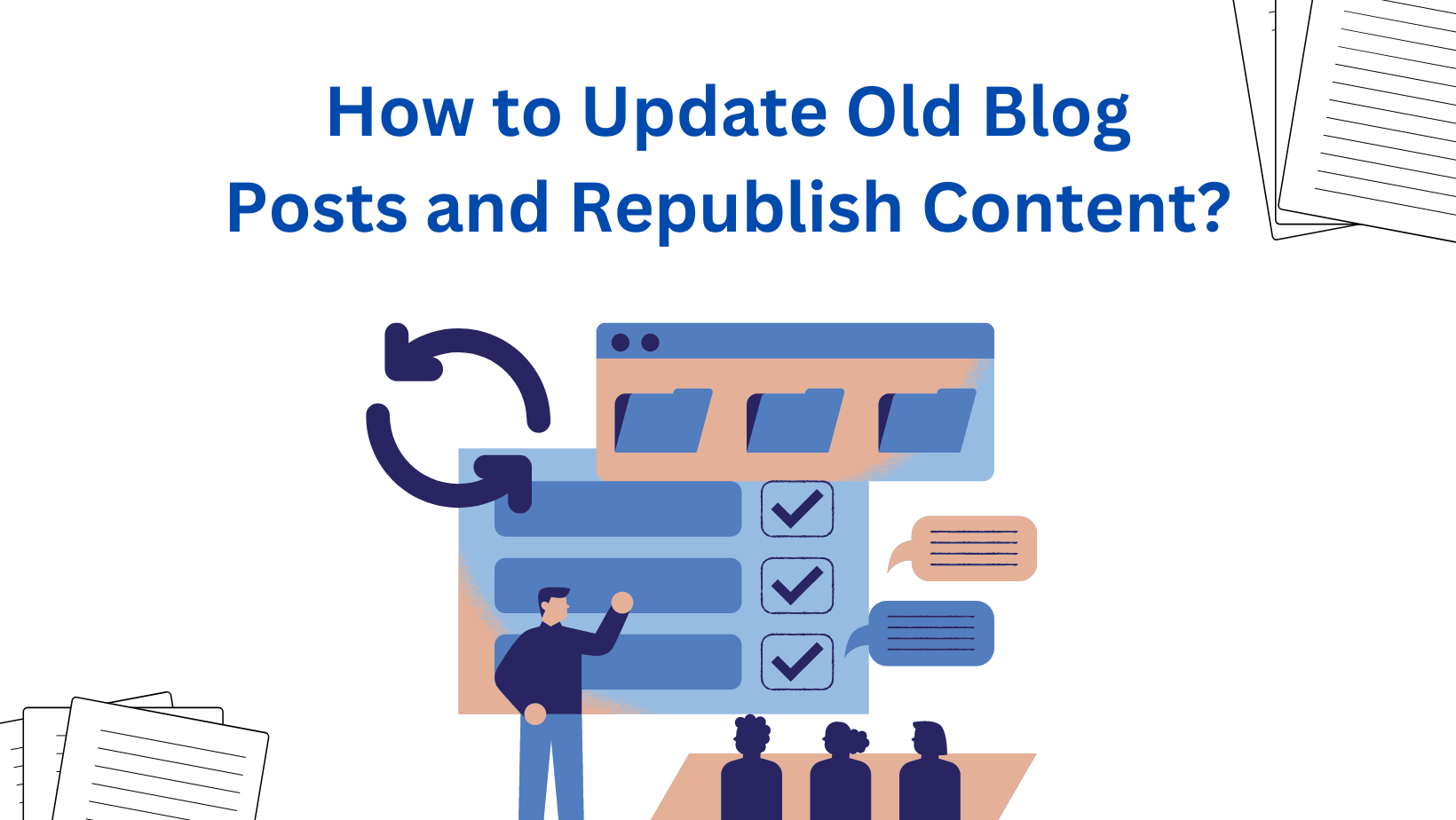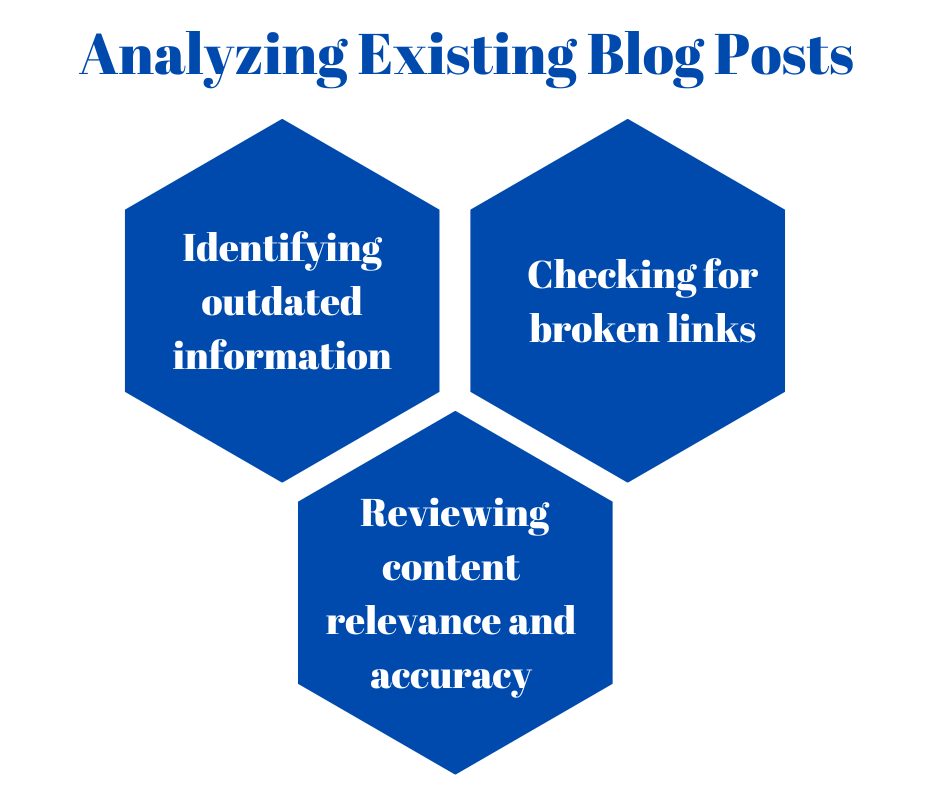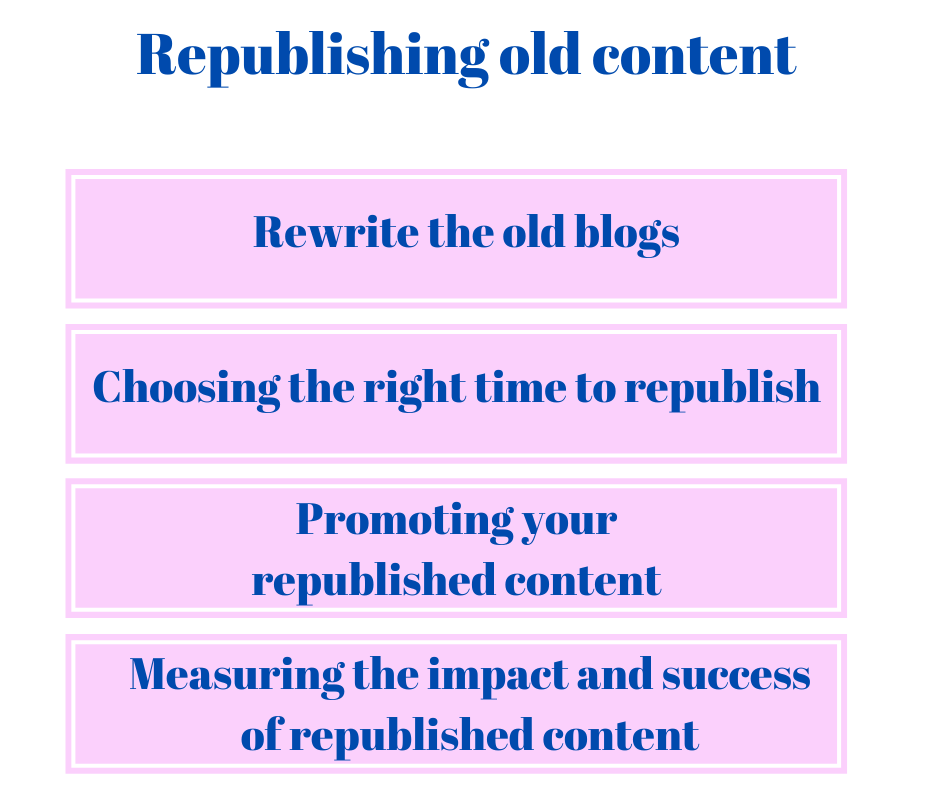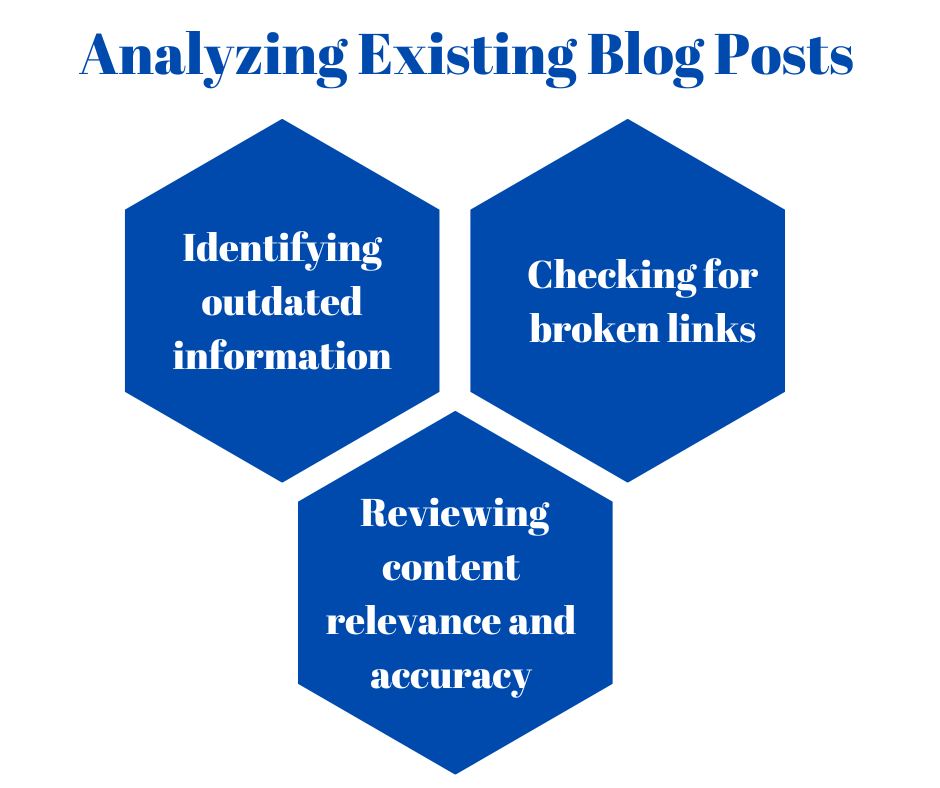As a content creator, it’s important to keep your blog updated with fresh and relevant information. However, it’s also crucial to revisit and update your old blog posts periodically. This practice is commonly known as “content repurposing” or “content recycling”.
Republishing old blog posts can bring several benefits to your website, such as improving your search engine ranking, increasing traffic to your website, and engaging your existing audience.
By updating your old blog posts, you can ensure that your content remains timely and relevant and that it continues to provide value to your readers.
Furthermore, repurposing old content can save you time and effort, as you can leverage your existing content to create new pieces of content, such as social media posts, newsletters, or e-books. Here is a complete guide to help you understand How to Update Old Blog Posts and Republish Content.

Page Contents:
Importance of keeping content fresh and relevant
In today’s fast-paced digital world, it’s crucial to keep your website’s content fresh and relevant. Regularly updating your website with new and engaging content can help attract and retain visitors to your website.
Fresh and relevant content also helps improve your website’s search engine optimization (SEO) by creating more opportunities for search engines to index your website. However, fresh content does not only mean adding new blogs and articles, improving the old ones is an equally effective tactic.

Additionally, keeping your content up-to-date demonstrates to your audience that you are invested in providing them with the most current and accurate information.
It’s important to remember that your website is often the first point of contact for potential customers, and having outdated content can negatively impact their perception of your brand.
Therefore, it’s essential to prioritize the creation and maintenance of fresh and relevant content to ensure that your website remains a valuable resource for your audience.
Analyzing Existing Blog Posts
All the posts on your website do not require updating or republishing. Hence the first step is to filter those blogs that require a makeover.
If you’re analyzing existing blog posts, there are a few key factors to consider to ensure that the posts remain relevant and informative for your readers.
Firstly, it’s important to identify any outdated information that may be present in the post. This could include information that is no longer relevant or statistics that have never been updated.
It’s important to update the post with the latest information to ensure that readers are getting accurate and up-to-date information.
Secondly, checking for broken links is also important. Broken links can detract from the overall user experience and may cause frustration for readers who cannot access the information they need.
You can use a free online tool to scan your blog for broken links and then fix them as soon as possible. Finally, reviewing the content for relevance and accuracy is crucial to ensure that the post is still valuable and informative to readers.
This may involve updating information, adding new insights, or removing irrelevant content. It’s important to make sure that the post provides value to your readers, and that they will benefit from it.
How to Update Old Blog Posts?
As a blogger, updating your posts is an essential part of maintaining a successful blog. Regularly updating requires much more effort. Let me tell you some common practices.
Have you done with the first step which is finding and filtering the content that requires an update? Now the next step is to find and fix the loopholes in your old content.
Updating and republishing blog posts is a great way to improve the performance of your website. By keeping your content up-to-date, you can attract more traffic and keep your readers engaged.
Updating your blog posts also helps you to ensure that your content is accurate and relevant, which can help establish your authority in your niche.

It’s important to update the keywords you use in your articles to reflect the latest search trends. This will help ensure that your content is easily discoverable by your target audience.
The keywords you added when creating the blogs at that time may not be relevant or may be unable to attract traffic. Changing the keywords strategy is a must while updating your
Optimize old blog posts SEO. One important tactic is to update meta tags to ensure they are relevant and accurately reflect the content of your post. This can help search engines better understand the focus of your content and improve your rankings in search results.
You should check the backlinks and broken links in your old posts and update them accordingly. This will help improve the overall quality of your content and ensure that your readers can access any external resources you reference.
It’s important to make sure that your content is aligned with the present search intent. Your blog posts should be written with your current target audience and business goals in mind.
Over time ideations and the way content should target people. It’s a good idea to analyze the current top-ranking pages for your content and make changes to your old blog posts accordingly.
This can involve updating your content with new information, adding more visuals or multimedia, and ensuring that your articles are structured in a way that is easy to read and understand.
Republishing Old Content
Republishing old blog posts can be an effective way to breathe new life into your content and extend its reach to a wider audience. However, republishing requires careful planning and execution to ensure maximum impact and success.
One of the most important steps for republishing your content is to rewrite the old blogs with the latest information, delete the not applicable ones, add new content angles, and change the writing format.
Another important factor to consider when republishing is timing. Choosing the right time to republish can make a big difference in how well your content performs.
For example, if you’re republishing content that was originally published during a busy news cycle, you may want to wait until things have quieted down before republishing.

Another key aspect of republishing is promoting your republished content. This can be done through a variety of channels, such as social media, email newsletters, and paid advertising. By promoting your republished content, you can increase its visibility and reach a wider audience.
Finally, measuring the impact and success of republished content is essential to understanding its effectiveness. This can be done through tracking metrics such as page views, engagement, and conversions.
By analyzing these metrics, you can identify areas for improvement and adjust your republishing strategy accordingly.
